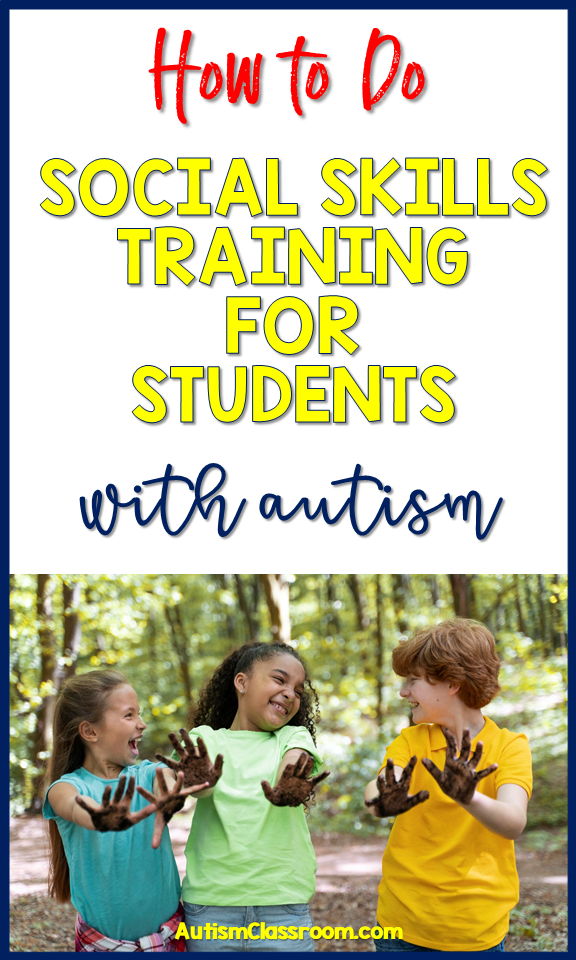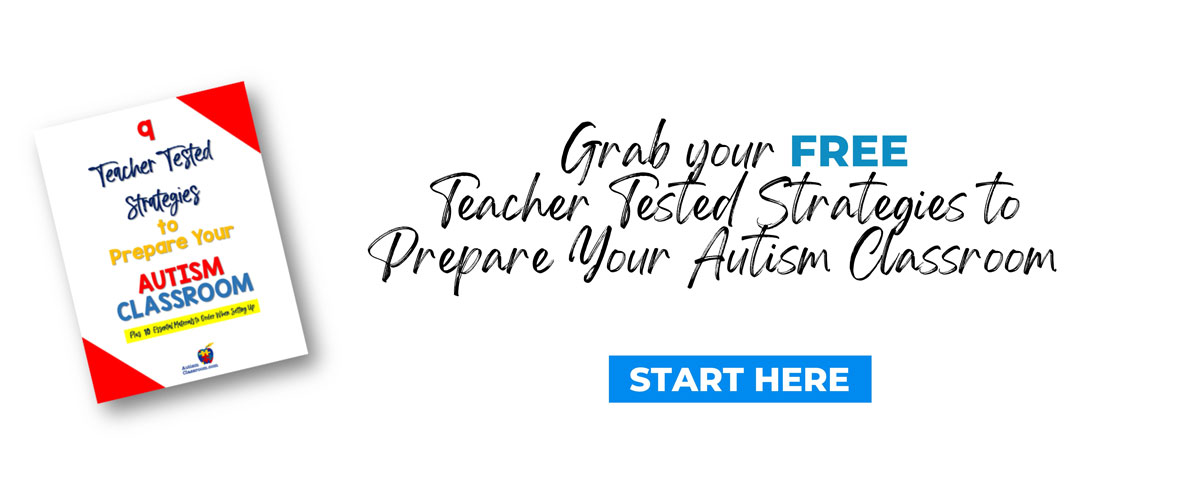Inside: Utilizing peers, using scenerios and social skills role play, goal setting and using videos for social skills instruction.
This page includes affiliate links. Learn more here.

Social Skills Training (SST) refers to evidence-based programs specially designed to help people with Autism Spectrum Disorder (ASD) learn to navigate social interactions. SST programs are both unique and effective because they keep in mind the unique needs of the individual engaging in the training, leaving room to skip modules and concepts that are not helpful and emphasize ones that are. This article will discuss a few key types of SST methods that can be used individually or in conjunction to help students with ASD improve their social skills.
Utilize peers in SST.
Peer-mediated instruction and intervention (PMII) is an effective SST tool that centers behavior modeling into the teaching process. Peers (typically ones without ASD or another related diagnosis) are specially briefed on how to act. They take on the role of a mentor or tutor to a student with ASD. From there, the peer mentor works closely with the student they are assigned to, all the while completing tasks, playing, and interacting socially. The benefit of this approach is that it takes an SST program beyond words on a page or content in a video module. Not only are students with ASD able to practice the skills they are trying to master, but they can also build connections and learn to navigate social settings in a hands-on way.
Bring scenarios to life.
Role-playing scenarios or writing out the elements of a real or hypothetical interaction are an excellent way to lock in certain socialization skills. It is especially important to know that maintaining variety in the SST program is paramount to keep content fresh and keeping students engaged. Make it relate to their life and to real issues that they are dealing with. For this reason, social skills role play alone is unlikely to give all relevant skills to a student engaging in SST. They will need other supports. Social stories, for example, are most powerful when combined with other SST methods.
Practice deliberate goal-setting.
SST can be arduous if not adequately tailored to each individual student. With such an expansive universe of goals to master, SST can quickly become boring and repetitive if an overly generic program is followed. Those helping a child through SST can avoid this very real problem by setting deliberate goals that are compatible with the child’s skills, needs, and interests. As an example, not every module needs to be completed. In fact, some students have a better SST experience if certain modules are skipped. It simply comes down to understanding the needs of the student and tailoring the curriculum to their needs.
Model behaviors by example or video.
Last but not least, teaching through social skills videos or by example or by modeling is a very effective SST method. Coupled with repetition of the social skill just reviewed, this method quickly locks in important skills in a digestible and accessible way. Some videos for social skills can be found on this page.
Takeaways
Because SST is rooted in evidence, there are several takeaways that make the training more effective. One constant of this kind of training, is making important concepts as concrete, simple, and structured as possible. This can be done by taking advantage of the variety of methods described above, as well as by building training routines and taking care to create a program that suits the unique needs of the student. Likewise, keeping students engaged is certainly a hurdle when teaching social skills, but it can be done (see our tips here), particularly by keeping trainings fresh and blocking out time for some “real-world” practice of learned skills.


